Jízda na kolečkových bruslích je zábavná, snadno se začíná a nepotřebujete velký rozpočet. Ale najít správné brusle jako začátečník může být složité. Špatné brusle? Puchýře, nepohodlí a frustrace. Správné brusle? Hladká jízda, lepší rovnováha a větší sebevědomí.
Tady je, co potřebujete vědět:
- Správné padnutí je důležité: Pečlivě změřte své nohy – velikosti bruslí nejsou stejné jako velikosti bot.
- Styl boty: Vysoké boty poskytují lepší oporu kotníku (skvělé pro začátečníky). Nízké boty jsou lehčí, ale méně stabilní.
- Kola: Měkčí kola (78A-82A) jsou lepší na hrubší povrchy. Držte se velikosti 62-65 mm pro stabilní jízdu.
- Rozpočet: Pořiďte si něco mezi 80–150 $ pro začátečnické modely, které vyvažují kvalitu a cenu.
Několik skvělých tipů pro rok 2025:
- Sure-Grip Fame Skates (89–109 $): Odolné, pohodlné a vhodné pro začátečníky.
- Riedell Dart/Angel Models (99–139 $): Skvělá volba s možností vylepšení dílů.
- Moxi Beach Bunny/Rainbow Rider (149–179 $): Perfektní pro venkovní bruslení.
Nezapomeňte na bezpečnostní vybavení (helmu, chrániče) za 30–60 $. Připraveni vyrazit? Pojďme se ponořit do detailů!
Průvodce nákupem kolečkových bruslí – na co si dát pozor, jak změřit nohy a čemu se MUSÍTE vyhnout!
Na co si dát pozor při koupi kolečkových bruslí pro začátečníky
Nákup prvních kolečkových bruslí může být vzrušující, ale je snadné se ztratit v tolika možnostech. Aby to bylo jednodušší (a abyste se vyhnuli pozdějším lítostem), zaměřte se na to, co je pro začátečníky nejdůležitější: správné padnutí, pevná podpora, správná kolečka a rozumná cena. Pojďme to rozebrat krok za krokem.
Padnutí a velikost
Správné padnutí je zásadní pro váš zážitek z bruslení. Pokud vám brusle nesedí dobře, můžete skončit s puchýři, nestabilní kontrolou nebo dokonce zraněními – což bruslení rozhodně neudělá zábavné.
Tady je věc: velikosti kolečkových bruslí se nemusí vždy shodovat s vaší běžnou velikostí bot. Různé značky mají své zvláštnosti, takže nepředpokládejte, že vaše velikost tenisek bude fungovat. Místo toho si vezměte kus papíru, postavte se ke zdi a obtáhněte nohu. Změřte vzdálenost od paty k nejdelšímu prstu (v centimetrech). Toto číslo je vaše velikost Mondopoint, což je nejpřesnější způsob, jak zjistit velikost bruslí.
Jakmile máte své měření, porovnejte ho s velikostní tabulkou bruslí, které máte na oku. Mnoho značek dokonce nabízí tipy, zda si vybrat větší nebo menší velikost u konkrétních modelů.
Pokud máte širší nohy, povolení tkaniček může pomoci zvýšit pohodlí. Pro užší nohy může utažení tkaniček nebo přidání vložky udělat velký rozdíl. Silnější ponožky jsou další užitečný trik pro těsnější padnutí.
Jakmile máte velikost vyřešenou, je čas přemýšlet o typu boty, která vám nejlépe sedne.
Typ boty: Kotníkové vs. Nízké
Styl boty hraje velkou roli v tom, jak se vám brusle budou cítit a jak budou fungovat, zvlášť když začínáte.
Kotníkové brusle jsou skvělou volbou pro začátečníky, protože nabízejí extra podporu kotníku. To je velmi užitečné, když se učíte udržet rovnováhu a získat sebevědomí. Tato dodatečná podpora také může pomoci předejít vyvrtnutí kotníku, což je velké plus pro nováčky. Nevýhoda? Kotníkové brusle mohou být trochu tuhé a déle se rozbíhají.
Nízké boty jsou naopak lehčí a dávají vám větší svobodu pohybu. Jsou ideální pro bruslaře, kteří chtějí rychlost, obratnost nebo plánují trávit hodně času venku. Ale bez dodatečné podpory kotníku nemusí být nejlepší volbou pro někoho, kdo si teprve hledá jistotu.
Pro většinu začátečníků jsou bezpečnější volbou vysoké boty. Poskytnou vám stabilitu, kterou potřebujete, když se učíte. Jakmile budete na kolečkách jistější, můžete přejít na nízké boty, pokud chcete větší volnost pohybu.
Specifikace koleček
Kolečka se na první pohled nemusí zdát důležitá, ale věřte mi, že výrazně ovlivňují výkon vašich bruslí. Dvě věci, na které je třeba dávat pozor, jsou průměr a tvrdost.
- Průměr: Většina koleček má průměr mezi 58 mm a 65 mm. Menší kolečka se lépe ovládají, zatímco větší lépe přejíždějí nerovnosti a praskliny.
- Tvrdost: Měří se na stupnici durometru. Měkčí kolečka (78A–82A) lépe drží a tlumí nárazy, což je skvělé na hrubé povrchy. Tvrdší kolečka (82A–85A) jsou rychlejší, ale méně odpouštějící.
Pro začátečníky jsou měkčí kolečka v rozmezí 62–65 mm ideální volbou. Jsou stabilní, pohodlná a dostatečně univerzální pro jízdu uvnitř i venku. Navíc vám pomohou udržet kontrolu, zatímco se stále učíte.
Teď, když máte technické základy, pojďme si povědět, kolik byste měli utratit.
Cenové rozpětí pro začátečníky
Stanovení rozpočtu je klíčové pro nalezení bruslí, které splní vaše potřeby, aniž byste přeháněli. Zde je hrubý přehled toho, co můžete očekávat v různých cenových hladinách:
- Pod 80 $: Tyto jsou cenově přívětivé, ale mohou šetřit na pohodlí nebo odolnosti. Dobré pro občasné vyzkoušení, ale nejsou ideální pro vážné použití.
- 80–150 $: Ideální volba pro začátečníky. Brusle v této cenové kategorii nabízejí slušnou podporu, pohodlné polstrování a spolehlivé díly. Značky jako Sure-Grip, Riedell a Moxi zde mají solidní možnosti.
- 150–200 $: Vyšší kvalita materiálů a zpracování. Tyto brusle jsou skvělé, pokud plánujete jezdit pravidelně a chcete něco, co vydrží.
- Více než 200 $: Na této úrovni platíte za pokročilé funkce, které většina začátečníků nepotřebuje. Začněte ve střední třídě a později upgradujte, pokud u tohoto koníčku vydržíte.
Nezapomeňte započítat náklady na ochranné vybavení. Dobrá helma, chrániče kolen a zápěstí vás vyjdou na dalších 30–60 $, ale rozhodně se vyplatí, když se učíte. Bezpečnost především!
Nejlepší cenově dostupné kolečkové brusle pro začátečníky (doporučení 2025)
Pokud právě začínáte s kolečkovým bruslením, nalezení správného páru bruslí, který vyvažuje cenu, pohodlí a výkon, je klíčové. Níže jsme pro vás vybrali některé z nejlepších cenově dostupných možností, které nabízejí solidní konstrukci, vlastnosti vhodné pro začátečníky a ceny, které nezruinují vaši peněženku.
Sure-Grip Fame brusle
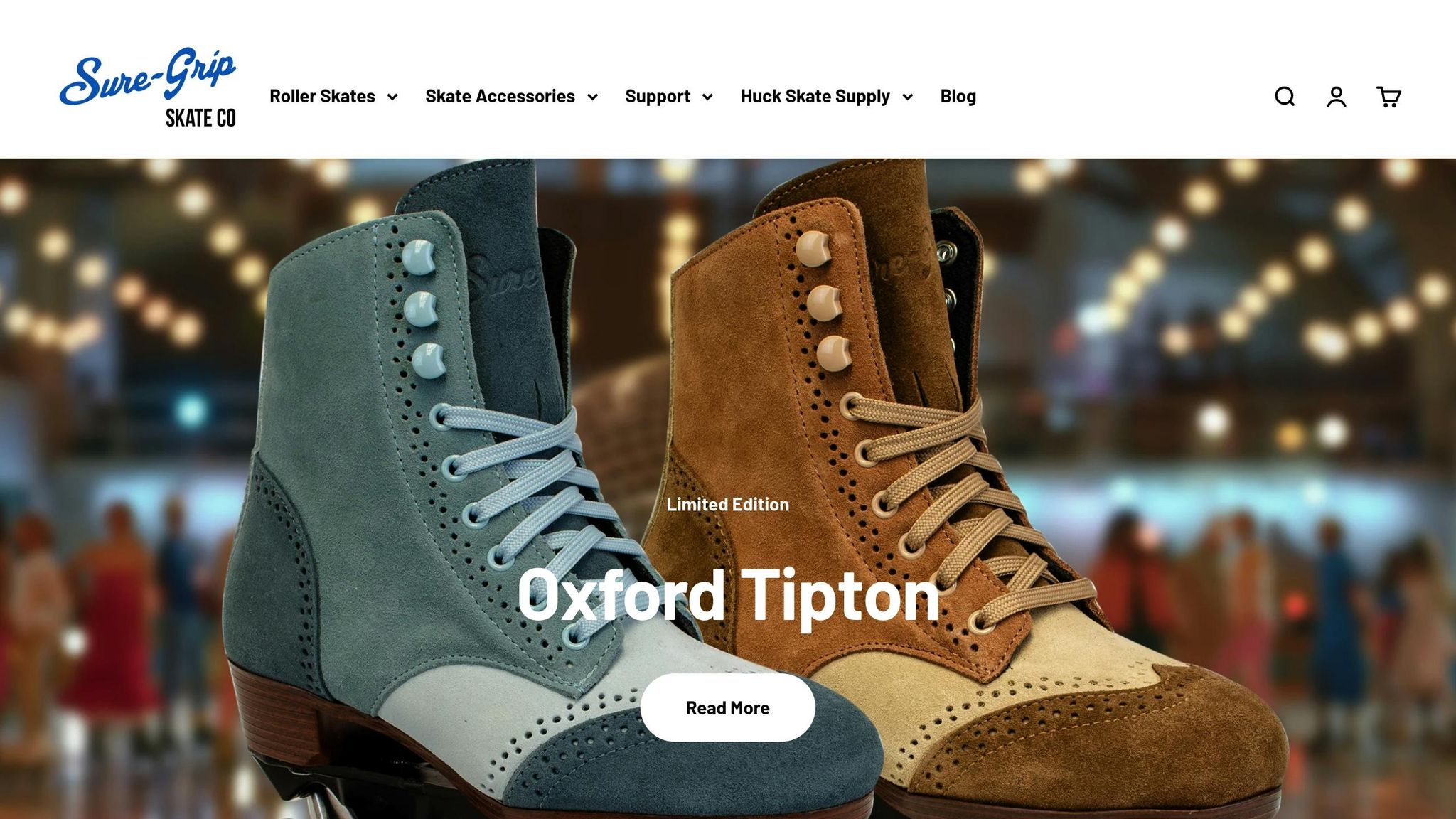
S cenovým rozmezím $89–$109 jsou brusle Sure-Grip Fame skvělou volbou pro začátečníky hledající odolnost a podporu. Tyto brusle mají vinylovou konstrukci boty s vyztuženým šitím, což jim dává pevnou stavbu bez tuhosti, kterou byste mohli najít u kožených bot. To znamená, že se rychleji a snadněji rozchází – ideální pro nováčky v bruslení.
Vysoký střih poskytuje vynikající oporu kotníku, což je zvláště důležité pro začátečníky, kteří si ještě hledají rovnováhu. Brusle jsou vybaveny 62mm kolečky s tvrdostí 82A, což je činí univerzálními pro vnitřní haly i hladké venkovní povrchy. Sure-Grip Super X deska, vyrobená z lehkého hliníku, nabízí dobrou rovnováhu mezi citlivostí a tolerancí, takže můžete trénovat základní pohyby, aniž byste se cítili zatíženi.
Výraznou vlastností je polstrovaný límec a jazyk, které pomáhají předcházet nepohodlí kolem kotníků. Navíc šněrování vede až k špičce, což umožňuje těsné a přizpůsobitelné utažení. Pokud hledáte brusle, které kombinují odolnost, pohodlí a snadné použití, Sure-Grip Fame je solidní volba.
Riedell modely pro začátečníky
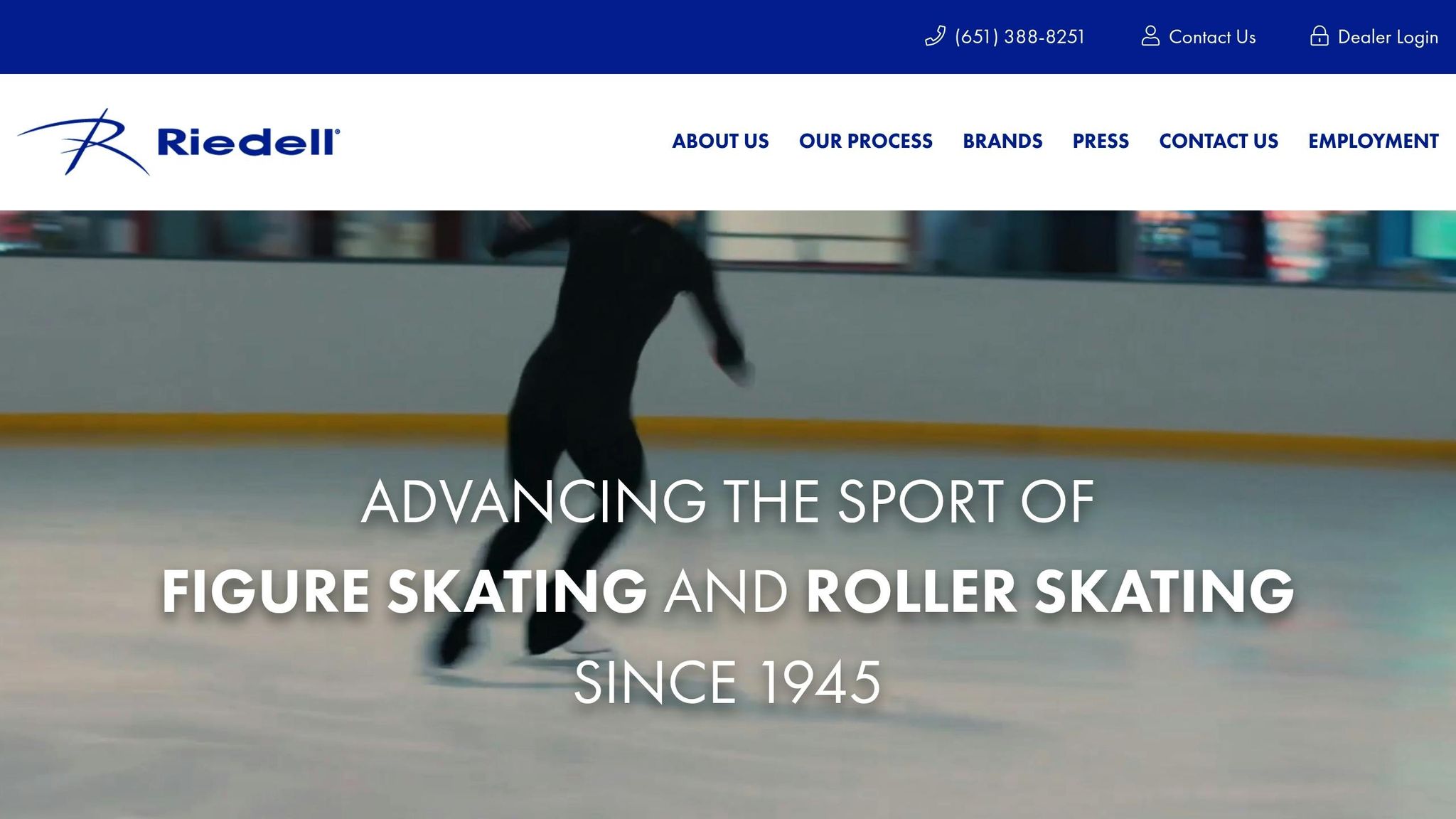
Riedell je již desetiletí důvěryhodným jménem v oblasti kolečkových bruslí a jejich modely Dart a Angel, vhodné pro začátečníky, nejsou výjimkou. Oba jsou promyšleně navrženy tak, aby učení bruslení bylo co nejplynulejší.
- Riedell Dart: Cena $119–$139, Dart má syntetickou koženou botu, která je odolnější než vinyl a zároveň se snadno rozchází. Bota je tvarována tak, aby kopírovala přirozené kontury vaší nohy, čímž snižuje tlakové body pro pohodlnější nošení. V kombinaci s PowerDyne Thrust deskou a 62mm Radar Cayman kolečky nabízí tato sestava stabilní a přitom obratnou jízdu.
- Riedell Angel: Pokud hledáte něco cenově dostupnějšího, Angel (za cca 99–119 dolarů) nabízí podobné pohodlí s jednodušším designem. Oba modely mají polstrovanou konstrukci a zesílené průvleky pro odolnost.
Jednou z výrazných vlastností Riedell je jejich modulární design. Jak se vaše dovednosti zlepšují, můžete upgradovat jednotlivé komponenty jako desky, kolečka nebo ložiska, aniž byste museli měnit celé brusle. To dělá z Riedell skvělou dlouhodobou investici pro začátečníky, kteří plánují u sportu zůstat.
Moxi Skates Outdoor Completes
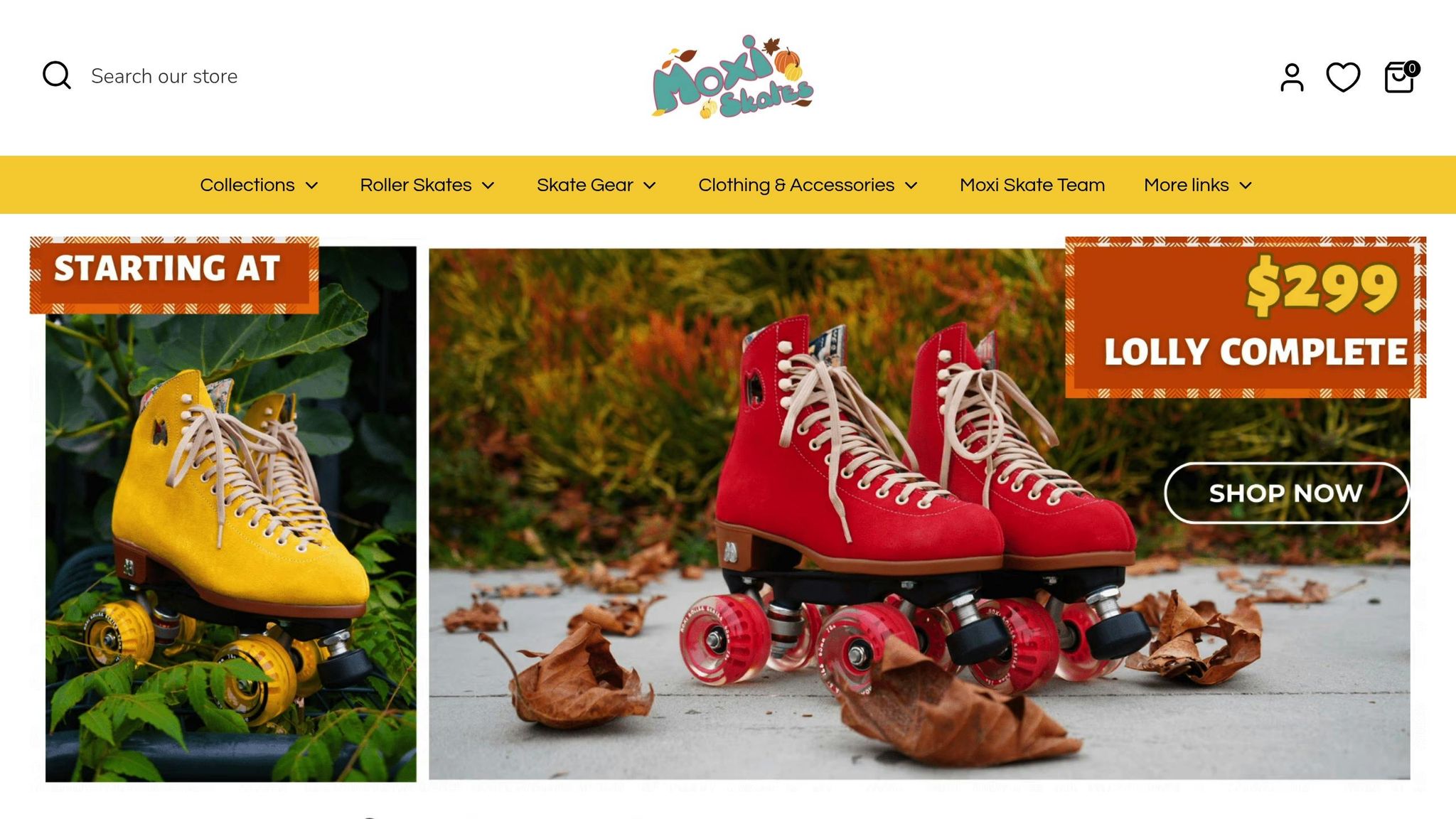
Pro ty, kteří se chtějí zaměřit na venkovní bruslení, jsou modely Moxi Beach Bunny a Rainbow Rider vynikající volbou. I když jsou cenově o něco výše, od 149 do 179 dolarů, přidaná kvalita a výkon stojí za zvážení.
Beach Bunny má botu z veganské kůže speciálně navrženou pro venkovní použití. Jeho 65mm kolečka s tvrdostí 78A hladce kloužou po nerovných površích, kde by tvrdší kolečka mohla mít problémy. PowerDyne Reactor Neo deska nabízí lepší přenos energie a přesnost, což je znát, jakmile pokročíte k složitějším pohybům jako jsou křížení nebo přechody.
Moxi také vyniká svými podrobnými průvodci velikostmi a užitečnou zákaznickou podporou, což usnadňuje najít perfektní padnutí – něco, co je obzvlášť důležité při objednávání online. Začátečníci často ocení mírně nižší výšku podpatku, která působí přirozeněji a méně zastrašujícím dojmem. Štědrá výplň kolem kotníku a šněrovací systém umožňující drobné úpravy dělají tyto brusle pohodlnými pro širokou škálu tvarů nohou.
Proč tyto brusle vynikají
Každá z těchto možností nabízí začínajícím bruslařům to nejdůležitější: správné padnutí, pevnou oporu kotníku a kolečka vhodná pro zamýšlené povrchy. Navíc jsou vyrobeny tak, aby vydržely, takže se nemusíte bát, že se po pár jízdách rozpadnou. A pokud se někdy rozhodnete upgradovat, tyto brusle si dobře drží hodnotu, což usnadňuje jejich prodej nebo předání dál.
Ať už vyrážíte na kluziště nebo si užíváte jízdu venku, tyto brusle jsou navrženy tak, aby vaše první kroky do světa kolečkového bruslení byly zábavné a bez frustrace.
sbb-itb-17ade95
Proč jsou Snowfeet* Skates lepší pro začátečníky
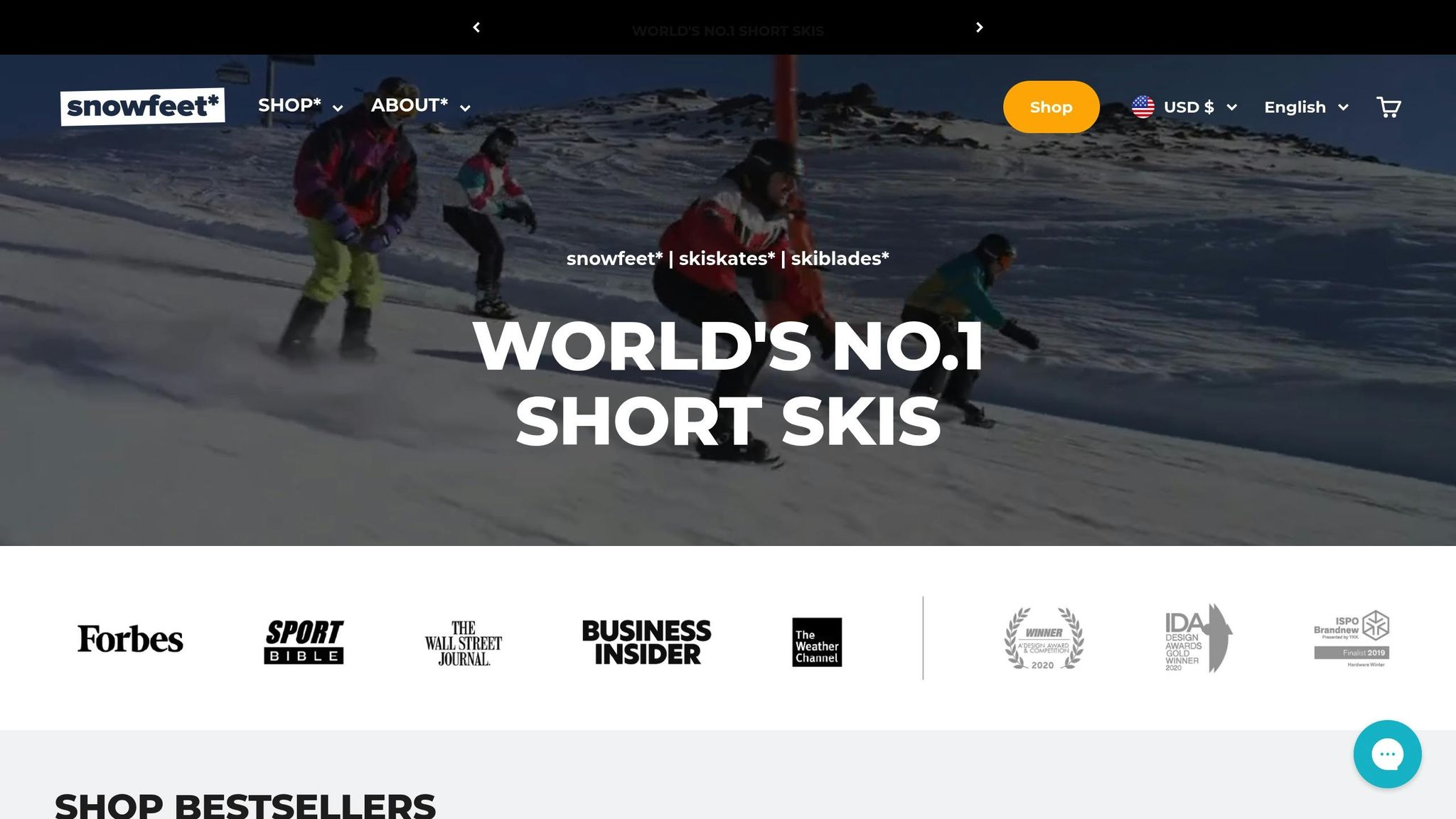
Snowfeet* mění způsob, jakým začátečníci zažívají zimní sporty. Odstraňováním běžných překážek, jako je objemné vybavení a vysoké náklady, Snowfeet* usnadňují ponoření se do zasněžené zábavy jako nikdy předtím.
Přenosnost a snadné použití
Jednou z největších výhod Snowfeet* je jejich přenosnost a jednoduchost ve srovnání s tradičními lyžemi nebo snowboardy. Běžné lyže mohou být dlouhé 5–6 stop, ale Snowfeet* Mini Ski Skates měří jen 15 palců (38 cm). Jsou dost malé, aby se vešly do batohu, takže je můžete vzít do veřejné dopravy, schovat v malém bytě nebo sbalit na výlet – není třeba střešní nosiče ani nadměrné zavazadlo.
Tradiční lyžování často znamená dlouhé cesty, půjčování vybavení a čekání ve frontách na vleky. Se Snowfeet* to všechno můžete vynechat. Stačí je připnout na zimní boty a vyrazit na blízký zasněžený kopec, do parku nebo dokonce na vlastní zahradu. Není potřeba žádné skipasy ani přístup do střediska.
Nastavení je osvěžující jednoduché. Zapomeňte na složité lyžařské vázání nebo potřebu speciálních bot. Snowfeet* fungují s vašimi zimními botami, které už vlastníte, takže není třeba se zabývat úpravami nebo přizpůsobením. Tento přímočarý design usnadňuje začátečníkům rychle začít.
Vlastnosti přátelské k začátečníkům
Snowfeet* mají mnohem mírnější učební křivku ve srovnání s tradičním lyžováním. Jejich kompaktní velikost je méně zastrašující a snadněji ovladatelná, takže začátečníci se mohou soustředit na rovnováhu a pohyb, aniž by byli zahlceni těžkým a neohrabaným vybavením.
Protože můžete použít své běžné zimní boty, není třeba investovat do drahých lyžařských bot nebo řešit nepohodlí, které často způsobují. Tato pohodlnost také pomáhá novým uživatelům vyhnout se běžným bolestem – doslova.
Další výhodou? Snowfeet* fungují na různých typech terénu. Na rozdíl od tradičních lyží, které jsou nejlepší na upravených sjezdovkách, Snowfeet* zvládnou turistické stezky, mírné kopce a různé sněhové podmínky. Tato flexibilita umožňuje začátečníkům trénovat v známém, nenáročném prostředí před tím, než se pustí do náročnějších výzev.
Dostupnost a hodnota
Snowfeet* nejsou jen snadné na použití – jsou také šetrné k rozpočtu. Kompletní sada tradiční lyžařské výbavy může stát přes 800 dolarů, plus denní poplatky za vleky. Naproti tomu Snowfeet* začínají na pouhých 250 dolarech a vyžadují velmi málo údržby.
Pro rodiny jsou úspory ještě výraznější. Vybavení rodiny se čtyřmi členy tradiční lyžařskou výbavou by vás mohlo stát 3 000 až 5 000 dolarů. Se Snowfeet* můžete vybavit všechny za méně než 1 000 dolarů.
Náklady na údržbu jsou také minimální. Tradiční lyže vyžadují pravidelné voskování, broušení hran a profesionální seřízení, což může přidat 50 až 100 dolarů za sezónu. Snowfeet* naopak potřebují jen základní čištění a náhradní díly začínají na pouhých 6 dolarech.
Srovnávací tabulka: Snowfeet* vs. standardní značky lyží/snowboardů
Zde je rychlý přehled, jak si Snowfeet* stojí ve srovnání s tradičními lyžemi a snowboardy:
| Vlastnost | Snowfeet* Mini Ski Skates | Tradiční lyže | Snowboardy |
|---|---|---|---|
| Počáteční náklady | $250 | 800–1 500 $ | 600–1 200 $ |
| Požadavek na boty | Běžné zimní boty | Lyžařské boty (200–500 $) | Snowboardové boty (150–400 $) |
| Délka | 15 palců (38 cm) | 60–75 palců | 48–65 palců |
| Přenosnost | Vejde se do batohu | Vyžaduje střešní nosič nebo tašku | Vyžaduje tašku nebo obal |
| Přístup k terénu | Jakákoli zasněžená oblast | Převážně sjezdovky | Převážně sjezdovky |
| Denní poplatky | Žádné | Jízdenky na lanovku 100–200 $ | Jízdenky na lanovku 100–200 $ |
| Úložný prostor | Minimální | Velká skříň/garáž | Potřebuje střední prostor |
| Údržba | Základní čištění | Profesionální seřízení | Vyžaduje údržbu hran |
Tato tabulka shrnuje, proč je Snowfeet* tak skvělou volbou pro začátečníky. Je cenově dostupný, snadno použitelný a otevírá zimní sporty lidem, které by mohla odradit cena nebo složitost tradiční výbavy. Se Snowfeet* si můžete užít vzrušení z klouzání po sněhu bez starostí a nákladů na tradiční lyžování nebo snowboarding.
Praktické tipy pro první nákup kolečkových bruslí
Nákup prvních kolečkových bruslí není jen o výběru značky a držení palců – jde o nalezení správné velikosti, udržování údržby a vědění, kdy je čas na upgrade.
Jak změřit perfektní fit
Správná velikost je klíčem k radosti z bruslení. Začněte tím, že si doma změříte nohy. Obkreslete obě nohy na papír a změřte od špičky nejdelšího prstu až ke patě. Tento krok nepodceňujte – většina lidí má jednu nohu o něco větší než druhou!
Jakmile máte své rozměry, zkontrolujte tabulku velikostí konkrétní značky bruslí, kterou máte na oku. Nepředpokládejte, že vaše běžná velikost bot bude stejná; velikosti bruslí se mohou lišit. Pokud plánujete nosit silnější ponožky, možná budete muset zvolit o půl čísla větší velikost.
Při zkoušení bruslí mějte na sobě skutečné ponožky, ve kterých budete bruslit. Pro začátečníky jsou vhodné tenké sportovní ponožky, protože silnější ponožky mohou způsobit tlakové body a snížit kontrolu. Cílem je těsný fit: prsty by měly mít zhruba šířku palce prostoru vpředu, zatímco pata zůstává pevná při předklonu.
Vždy si vyzkoušejte fit ve stoje. Vaše nohy se přirozeně rozšiřují při zatížení, takže něco, co sedí dobře vsedě, může při stání nebo bruslení tlačit nebo být těsné. Postavte se, trochu se projděte a ujistěte se, že vám pata neklouže.
Základní tipy pro údržbu
Péče o vaše brusle zajistí jejich delší životnost a lepší výkon. Tady je pár jednoduchých tipů na údržbu:
- Po každé jízdě kolečka očistěte. Otřete je, abyste odstranili nečistoty a malé kamínky, které by je mohly časem poškodit.
- Pravidelně otáčejte kolečka. Každých 10–15 hodin bruslení prohoďte pozice koleček. Vnější kolečka se opotřebovávají rychleji, proto jejich rotace pomáhá vyrovnat opotřebení a prodloužit životnost.
- Dávejte pozor na brzdičky. Ty se opotřebovávají používáním, proto kontrolujte, zda je potřeba je utáhnout nebo vyměnit, aby brzdění bylo účinné.
- Vyberte správná kolečka podle terénu. Pro vnitřní bruslení na hladkých površích volte tvrdší kolečka (nad 88A tvrdost) pro lepší rychlost a kontrolu. Pokud bruslíte venku na hrubém povrchu, měkčí kolečka (78A–85A) pohlcují nárazy a zajišťují lepší přilnavost.
Tyto jednoduché kroky udrží vaše brusle v perfektním stavu a zajistí, že budou připravené vyrazit kdykoliv.
Postupné vylepšování komponent
Jak získáváte zkušenosti, pravděpodobně budete chtít některá vylepšení pro lepší zážitek z jízdy. Začněte kolečky a ložisky – ty mohou výrazně ovlivnit, jak hladká a rychlá vaše jízda bude. Poté zvažte vylepšení tlumičů pro lepší odezvu a nakonec bot, pokud potřebujete více pohodlí nebo podpory.
Vylepšení, která si vyberete, by měla odpovídat vašim bruslařským návykům. Pokud bruslíte jen občas, zaměřte se na odolnost a pohodlí. Ale pokud bruslíte často nebo zkoušíte pokročilé triky, vyplatí se investovat do výkonových vylepšení. Bruslení je cesta a vaše vybavení s vámi může růst!
Jak udělat správnou volbu
Teď, když jsme probrali základy velikosti, podpory a ceny, pojďme si povědět, jak udělat konečné rozhodnutí. Cíl? Najít kolečkové brusle, které budou ideální kombinací pohodlí, kvality a dostupnosti – a zároveň odpovídat vaší úrovni a cílům bruslení.
Začněte stanovením rozpočtu v rozmezí 75–150 $. Pak si změřte obě nohy v lyžařských ponožkách, abyste měli jistotu správné velikosti. (Ano, obě nohy – protože někdy nejsou úplně stejně velké!) Jak jsme už zmínili, jde o nalezení správné rovnováhy mezi technickými vlastnostmi a vašimi osobními potřebami.
Dávejte pozor i na svá kolečka. Povrch, na kterém budete jezdit, má velký vliv:
- Měkčí kolečka (78A–85A) jsou ideální pro hrubé venkovní povrchy.
- Tvrdší kolečka jsou lepší pro hladké vnitřní kluziště.
Pokud uvažujete o něčem trochu jiném, Snowfeet* nabízí kompaktní a intuitivní alternativu k tradičním lyžařským nebo snowboardovým vybavením. Jejich Mini Ski Skates a modely PRO, cenově mezi 250–275 $, se snadno kombinují s běžnými zimními botami a vyhnete se tak nepohodlným objemným úpravám. Jsou přenosné a jednoduché, což je skvělá volba pro zimní zábavu.
Často kladené otázky
Co mám dělat, když moje velikost bot nesouhlasí s tabulkou velikostí kolečkových bruslí?
Pokud vaše běžná velikost bot nesouhlasí s tabulkou velikostí kolečkových bruslí, nejchytřejší je brusle před koupí vyzkoušet. Velikosti se mohou lišit mezi značkami, takže nepředpokládejte, že vaše běžná velikost bude fungovat.
Když je zkoušíte, brusle by měly sedět pevně, ale ne nepříjemně těsně. Měli byste mít stále trochu místa na pohyb prstů. Nemůžete je vyzkoušet osobně? Žádný problém – podívejte se na konkrétní průvodce velikostmi značky. Podle jejich doporučení možná budete muset zvolit větší nebo menší velikost. Mnoho značek má také zákaznickou podporu, která vám pomůže najít správnou velikost.
Jaký je rozdíl mezi vysokými a nízkými botami na kolečkové brusle pro začátečníky?
Vysoké boty na kolečkové brusle jsou skvělou volbou pro začátečníky. Proč? Nabízejí extra podporu kotníku a stabilitu, což může být při začátcích velký rozdíl. Navíc design s vyvýšenou patou pomáhá udržet rovnováhu, takže učení základů je méně zastrašující. Jde o to, dát vám jistotu pokračovat v tréninku bez obav z nestabilních kotníků.
A co nízké boty? Jsou spíše volbou zkušených bruslařů. Tyto boty poskytují větší pohyblivost kotníku, což je perfektní pro triky, rychlou jízdu nebo pokročilé pohyby. I když jsou oblíbené u bruslařů, kteří chtějí posunout své dovednosti, začátečníci je mohou považovat za obtížnější na ovládání a méně podpůrné. Ale jakmile budete připraveni posunout své hranice, nízké boty mohou být váš další krok.
Proč jsou měkčí kolečka dobrou volbou pro začátečníky bruslící venku a jak ovlivňují výkon?
Měkčí kolečka jsou ideální pro začátečníky bruslící venku. Proč? Nabízejí lepší přilnavost a skvěle absorbují nárazy na hrbolatých površích jako chodníky a ulice. To znamená hladší a pohodlnější jízdu – přesně to, co potřebujete, když začínáte.
Tato kolečka obvykle mají tvrdost mezi 78A a 82A, což pomáhá minimalizovat vibrace a zmírnit nárazy na nerovném terénu. Extra stabilita a pohodlí, které poskytují, mohou udělat velký rozdíl, dávají novým bruslařům větší jistotu a lepší kontrolu při jízdě venku.







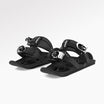













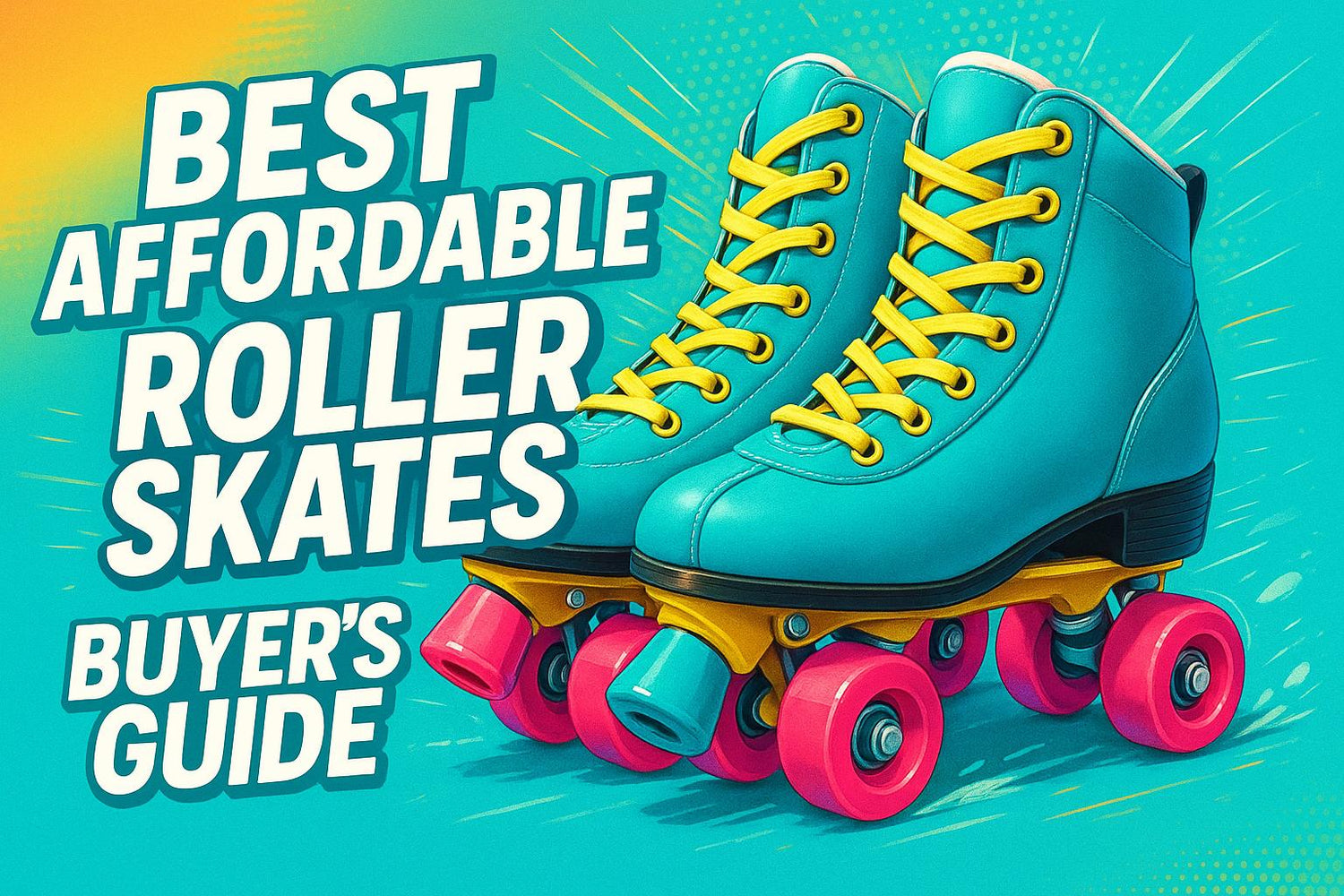
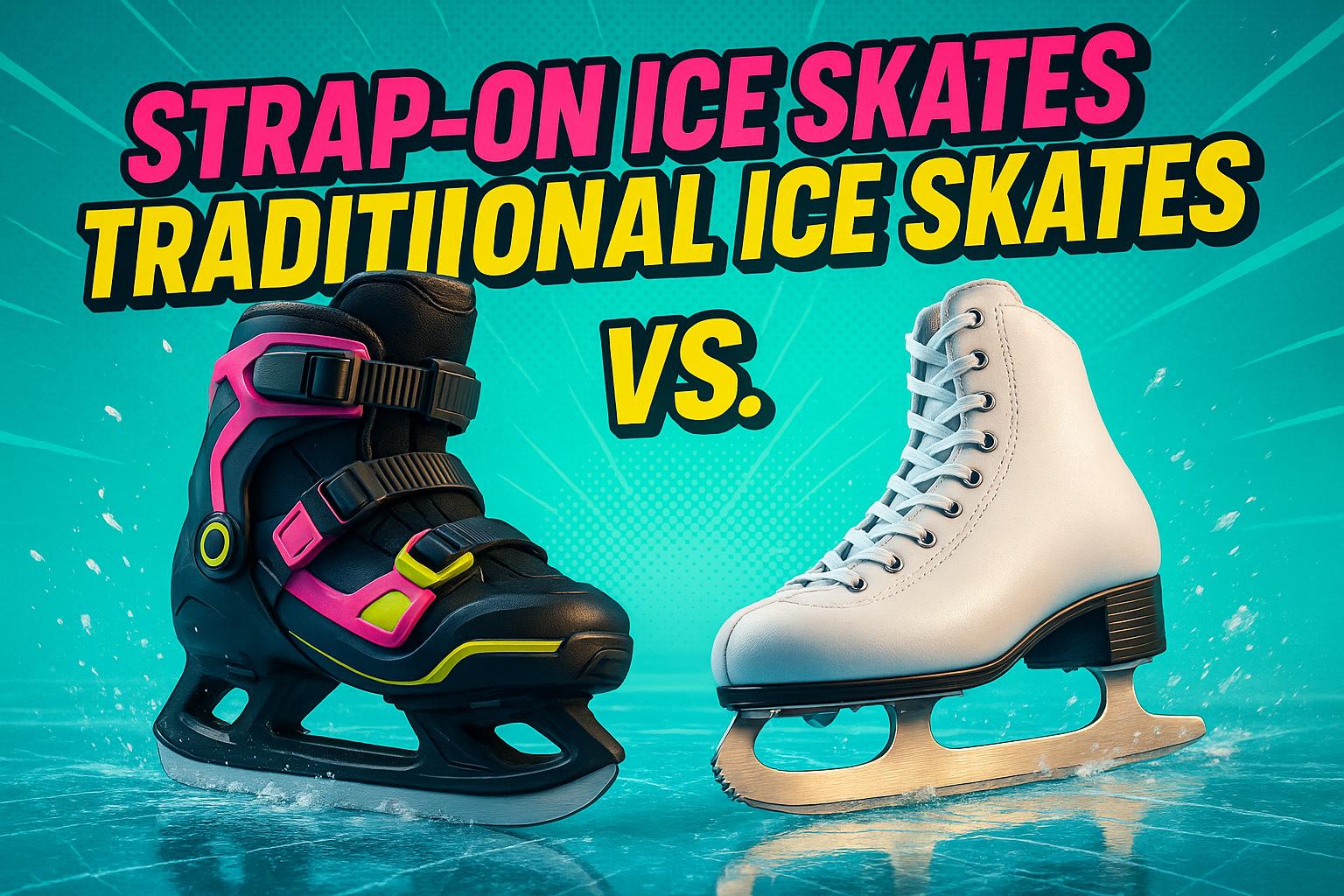
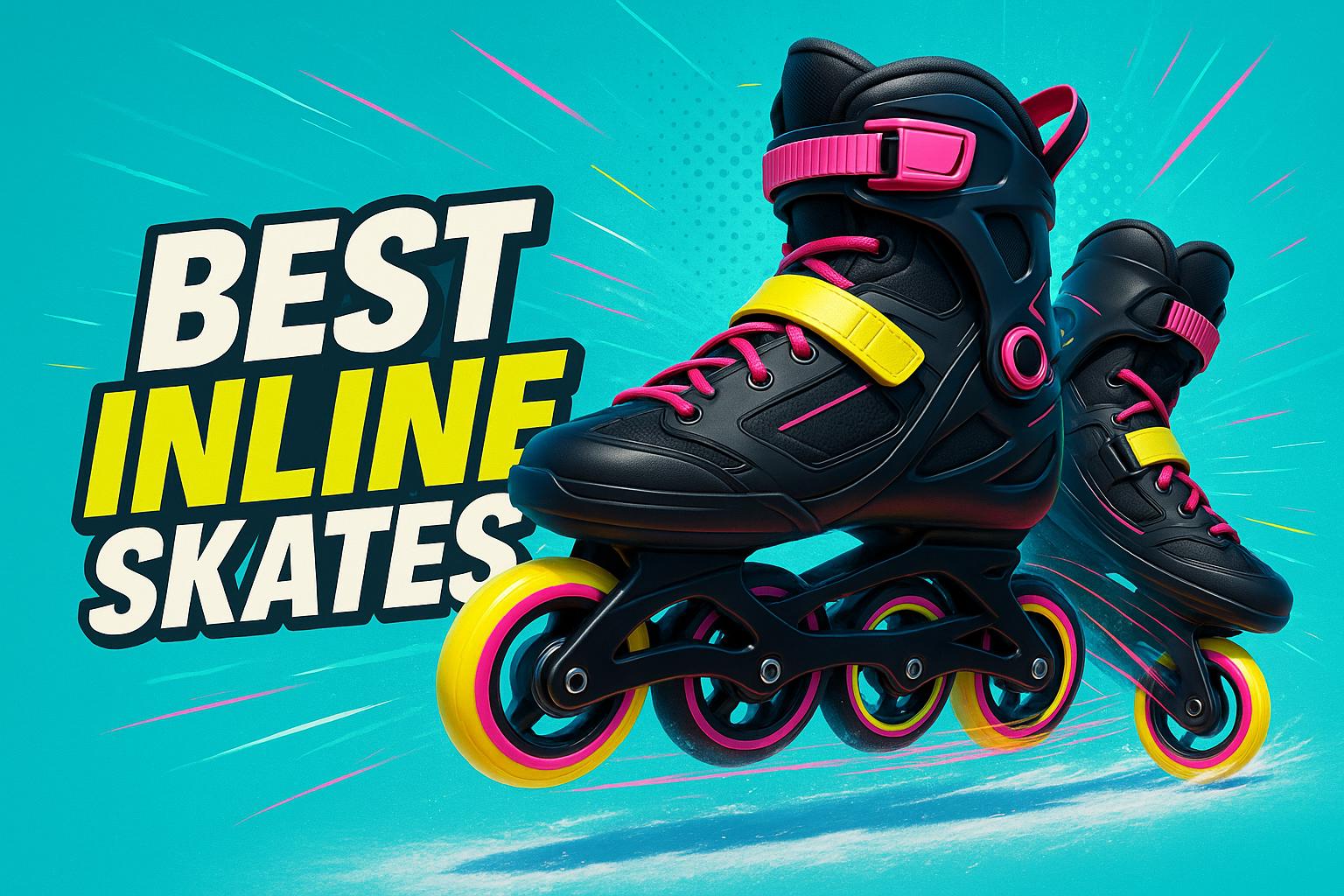




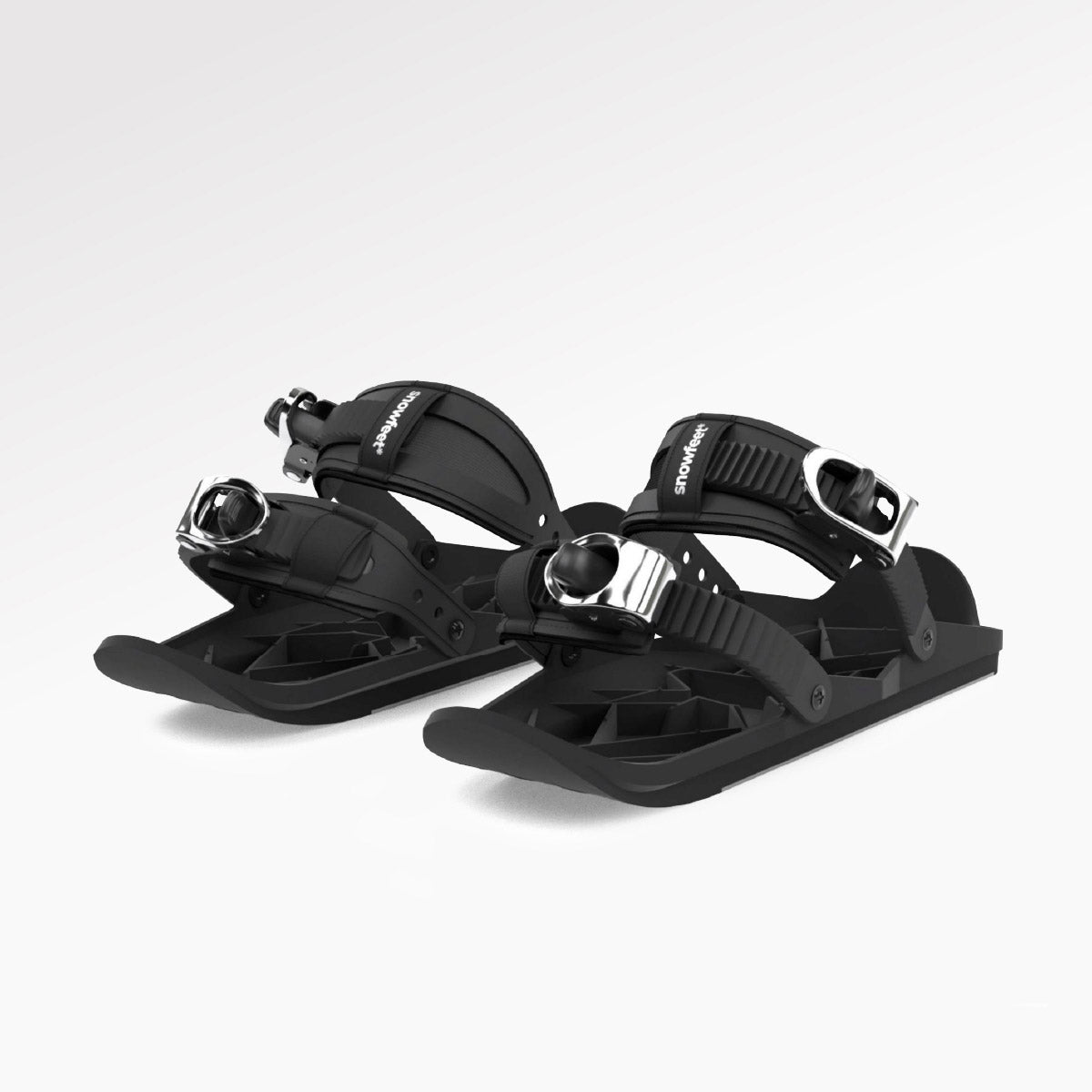
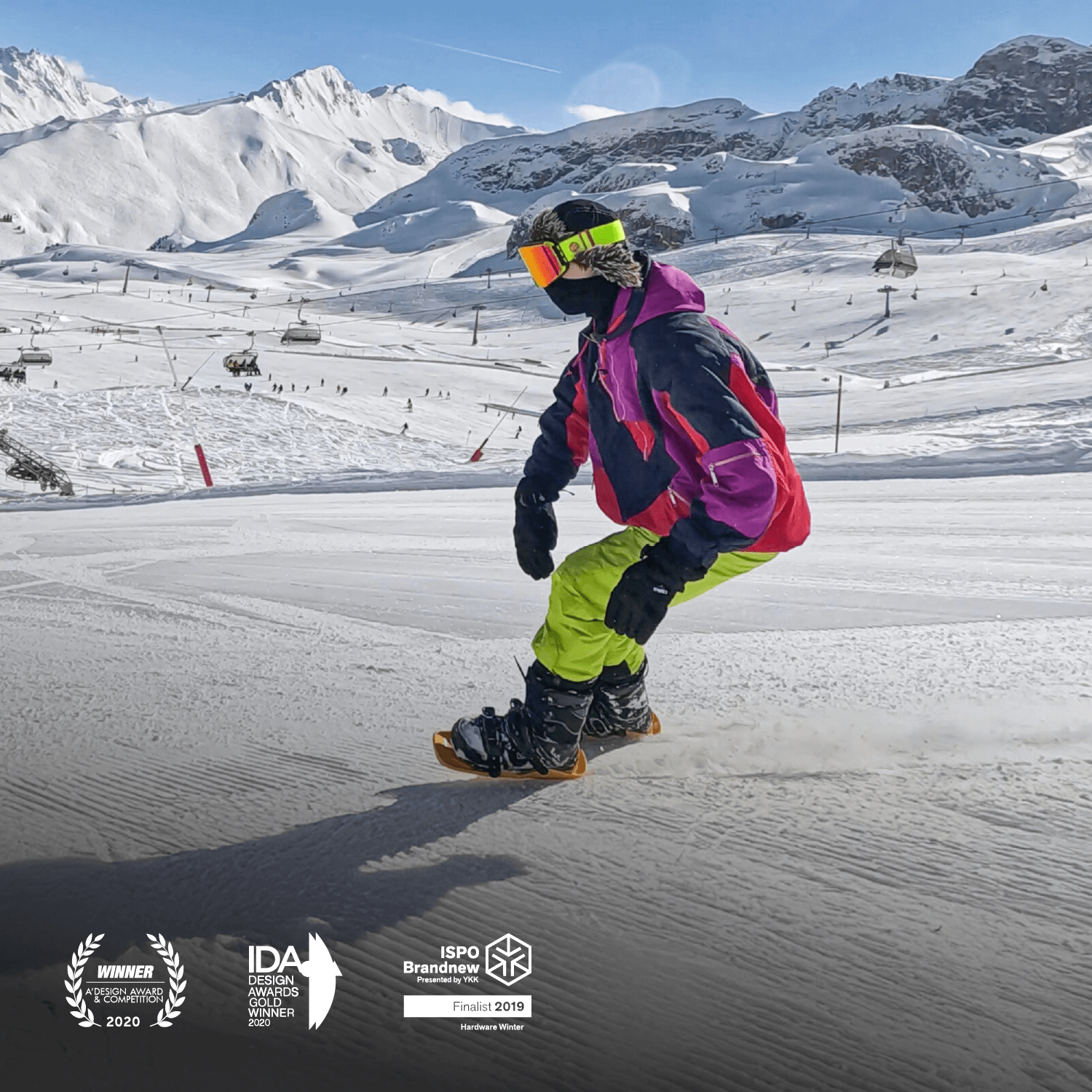




Zanechte komentář
Tento web je chráněn službou hCaptcha a vztahují se na něj Zásady ochrany osobních údajů a Podmínky služby společnosti hCaptcha.